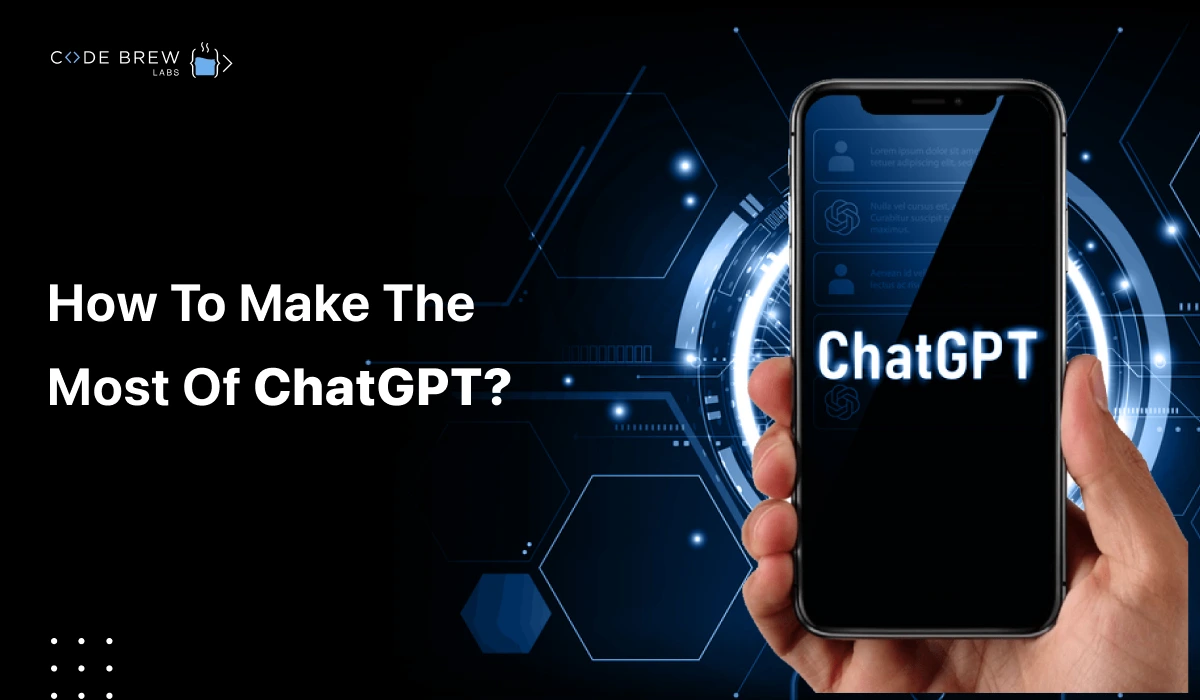
Welcome to the world of ChatGPT – where you can explore and expand your knowledge to new heights! As a language model developed by OpenAI and powered by the latest technology, ChatGPT is here to guide you on your quest for learning and discovery.
Table of Contents
With its advanced algorithms and natural language processing capabilities, ChatGPT can provide you with answers to all your questions, from the simplest to the most complex. No wonder why AI is one of the top technology trends in 2023!
But ChatGPT is more than just a search engine – it is a tool that can help you improve your life in countless ways. That’s why we, at Code Brew, have put together these 10 tips for making the most of ChatGPT.
Whether you’re a student looking to ace your exams, a professional seeking to boost your productivity, or simply a curious mind hungry for knowledge, these tips will help you get the most out of your interactions with this incredible tool.
From refining your search terms to asking the right questions, these tips will help you unlock the full potential of ChatGPT.
So, without further ado, let’s take a quick look at all the tips for making the best of ChatGPT.
One of the most important ways to make the best ChatGPT prompts is to be specific. The more specific your prompt is, the easier it will be for ChatGPT to generate a relevant and accurate response.
For instance, avoid asking “How does the weather today looks like?” Here, you didn’t mention the location. How about asking “What is the weather like in Abu Dhabi today?”. This will help ChatGPT figure out the context of your question and respond with a more accurate approach.
Another crucial way to make the best of ChatGPT prompts is to ask open-ended questions. Try not to ask yes or no questions. Instead, how about asking questions that encourage ChatGPT to provide more detailed and informative answers? For instance, instead of asking “Do you like ice cream?”, ask “What is your favorite flavor for ice cream and why?”. This will help ChatGPT provide a more thought-provoking and engaging answer.
Providing context is crucial when creating ChatGPT prompts as it helps you to understand what you’re asking and generate more accurate and relevant responses. For example, if you’re asking ChatGPT to provide information about a particular topic, provide some background information about that topic to help ChatGPT understand what you’re looking for.
OpenAI ChatGPT is designed to understand and generate responses in natural language. When creating prompts, try to phrase your questions as if you were asking a person, rather than a machine. This will help the chatbot come up with more natural-sounding responses.
That being said, there are already more powerful and capable versions of ChatGPT, like GPT3 and GPT4, that operate more complex natural language processing tasks.
While it’s important to provide context, it’s equally important to be clear and concise when creating ChatGPT prompts. Avoid lengthy prompts with unnecessary details. Keep your prompts clear, concise, and to the point.
Again, this will help ChatGPT understand what you’re asking and generate more accurate responses.
ChatGPT is highly sensitive to grammar and spelling errors. Make sure your prompts are free of errors and use proper punctuation. This will help ChatGPT understand what you’re asking and generate more accurate responses.
However, it does a great job at guessing what may want to say.
To get the most out of ChatGPT, try to use interesting and diverse topics that will challenge its capabilities and generate unique and informative responses. For example, you can ask ChatGPT about history, science, technology, or even popular culture. Using a variety of topics will help keep ChatGPT engaged and generate more interesting and informative responses.
It’s important to avoid including any biased language or loaded questions in your prompts. This will ensure that ChatGPT provides unbiased and informative responses. Lets’s understand with an example. You can ask “Do you think the El Nino effect is real?” But it’s more like you are asking ChatGPT to take a side. Instead, a far better prompt would be, “What are the potential effects of El Nino on the natural world?”. Do this and check the difference for yourself.
Try to experiment with different types of prompts to see how efficiently it serves your desired requirements. It will help you to get the most out of ChatGPT. You can try asking different types of questions, providing different types of context, and using different topics to see what generates the best responses.
Finally, it’s important to provide feedback on the responses generated by ChatGPT. This will help it learn and improve over time, ensuring that it generates even better responses in the future.
If ChatGPT provides an inaccurate or irrelevant response, provide feedback on why the response was inaccurate and what it could have done better. This will help ChatGPT understand how to improve and generate better responses in the future.
If you want to create the best OpenAI ChatGPT prompts requires careful consideration of the language, context, and tone of your questions. The tips mentioned above will help you to make the best ChatGPT prompts and also allows you to generate more accurate, engaging, and informative responses from ChatGPT.
That being said, you must keep experimenting with different types of prompts, provide feedback on responses, and stay up-to-date with new features and updates, like ChatGPT 3, to get the most out of this powerful language model.
Also read: ChatGPT: All you should know about the AI-Powered Chatbot
